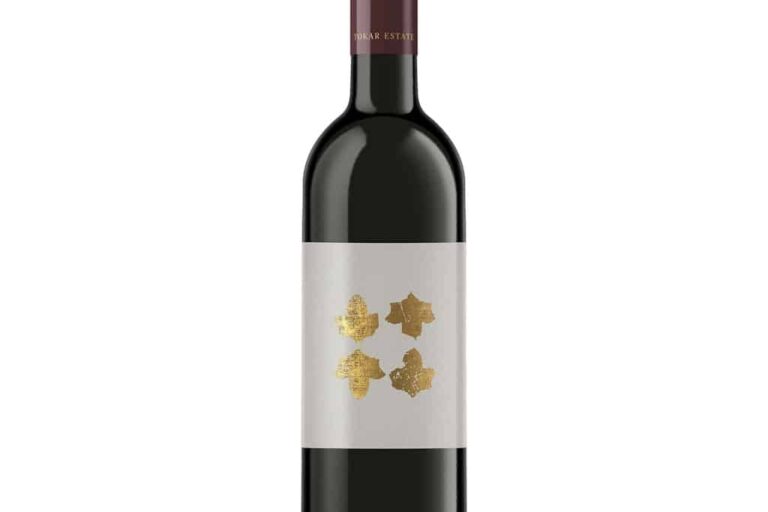WINE
Cabernet Sauvignon, the Big Kahuna!

WORDS: Peter Panousis - Peter Pan Wines PHOTOGRAPHY Supplied
Everything you always wanted to know about the ‘king of grapes’
Jancis Robinson, the world-famous wine writer, succinctly described Cabernet Sauvignon as the chocolate to Chardonnay’s vanilla. Cabernet Sauvignon is referred to as the king of grapes and many notable wine scribes including James Halliday cite that Cabernet Sauvignon is also one the world’s most widely planted grape varieties. Yet in spite of this anecdotal evidence from many in the wine game, Cabernet Sauvignon appears to be a declining category in both the retail and restaurant sectors. Happy to report in this part of the world the category is alive and well, albeit (a) not as popular as Shiraz and (b) perhaps a little misunderstood.
What is Cabernet Sauvignon?
Cabernet Sauvignon is a relatively small red berry variety that is thick-skinned, dark in colour and late ripening. The variety was said to be born around the 17th century in France, although some research indicates it may have originated in Rioja, Spain. As recent as 1999, evidence suggests that Cabernet Sauvignon is the offspring of Sauvignon Blanc and the other Cabernet, Cabernet Franc. In other words, Cabernet Franc is the “papa” grape and clearly was around much earlier than Cabernet Sauvignon. Cabernet Sauvignon is a hardy growing, frost resistant, high-yielding grape capable of growing in many terrains and climates, but prefers the “Goldilocks” climate of not too hot and not too cold. In terms of profile, Cabernet Sauvignon is normally dry, full-bodied, with both medium acidity and medium-high tannins. Tannins are the chemical compounds found in plants like coffee, tea leaves or fruits but also in grape skins, seeds and stalks. Tannins are noticed in the mouth as a puckering sensation and or on the side of the tongue as astringent sharpness, dryness, grip, or as some of my non-wine expert friends describe it, as a furry puckering sensation (or “furry tongue”). For me, this is the reason why I love Cabernet Sauvignon and why the grape works well when paired with red meat and or robust flavours and sauces. But avoid too much spice in food as tannins and spice don’t necessarily work well together.
Cabernet Sauvignon is not for the faint-hearted as it is more full-bodied than most wines. On both the nose and palate, Cabernet Sauvignon provides notes and flavours of blackcurrant, cassis, black cherry, baking spices such as cinnamon, pepper, nutmeg, vanilla and clove. Cabernet Sauvignon will also show notes of lead pencil shavings, tobacco leaf, anise, mint, eucalyptus and if the variety is grown in cooler climates one may see green capsicum or bell pepper nuances as well. However, many leading wine professionals suggest that this may also be due to poorly made Cabernet Sauvignon rather than a major characteristic of cool climate Cabernet. The regional difference will also influence Cabernet Sauvignon’s characteristics including if the variety is grown in warmer climates one may notice both sweet jammy notes and flavours as the wine may be made as a punchy fruit-driven style due to more grape ripening than the cooler climates. Notwithstanding this, winemaking is a science and ripe styles can be controlled by amongst other things picking the grapes early thereby ensuring the acidity is higher than the sugar levels. Thus, this will produce a lighter, more elegant and finer wine to that of late picked Cabernet.
Also, if you are wondering why Cabernet Sauvignon is sometimes blended with Merlot in particular, it is for the reason that Merlot has low tannins and is therefore soft, silky and provides a middle palate which is often lacking in some single variety Cabernet Sauvignon wines. This lack of a middle palate is often referred to as the “donut effect”. That is, single-variety Cabernets have lots of flavour and weight at the front and back palates but lack a middle palate.
Cabernet Sauvignon grows best in free-draining gravel-based soils, like the soils found in Bordeaux, France. These soils often lack nutrients so the vine consequently is forced to grow deep roots to seek out nutrients. Thus the vines produce fruit that is rich and concentrated in flavour and tannins. This is the reason why the Cabernet Sauvignon grapes of Bordeaux are small in size but have highly concentrated fruit juice. Of course, in the availability of water, the profile of Cabernet Sauvignon will often change. Cabernet Sauvignon also thrives in the dusty alluvial soils of Napa Valley, the iron oxide-rich red clay soils of Coonawarra, the deep, well-draining gravel and sandy soils of Margaret River, the low fertile, well-draining clay soils of the Yarra Valley and the multi soil types of McLaren Vale.
So, why Cabernet Sauvignon?
Cabernet Sauvignon can be found at several price points from ridiculously cheap to some of the most expensive in the world. Likewise, it can be made in a variety of styles from simple easy-drinking to elegant, complex, powerful and age-worthy.
Cabernet Sauvignon can be found in many countries and regions, thus providing a varied selection of wines and profiles for consumers, making the variety interesting. It can be found in good bottle shops in its own section, as well as on thoughtful well-prepared and balanced wine lists.
As Karen MacNeil of the Wine Bible states, “Cabernet Sauvignon is capable of making some of the most structured, complex, majestic, and age-worthy reds in the world. It’s astounding that a wine so often angular and powerful when young can meta-morphose into a velvety, rich, elegant, and complex wine with several years’ aging.” So, if you consider yourself a serious wine drinker it goes without saying – get some Cabernet Sauvignon, if not for drinking, then for some cellaring.
On the food front, Cabernet Sauvignon pairs well with rich meaty dishes or just good old fashioned red beef roasted, grilled or pan-fried. The acid and tannins in Cabernet Sauvignon marries particularly well with the dense proteins of beef and meat that is fatty. Also, try Cabernet Sauvignon with a firm and or mature hard cheese or rich dark chocolate – a match made in heaven.
What region is best?
The variety can be found abundantly in many regions including Bordeaux, France; both the Colchagua Valley and Maipo region of Chile; Okanagan in Canada; Beqaa Valley in Lebanon; Napa Valley and Washington State in the USA; Catalonia and Valencia in Spain; Lombardy, Emilia-Romagna, Tuscany and Friuli-Venezia Giulia in Italy; Mendoza in Argentina; Stellenbosch in South Africa; and Waiheke Island and Hawkes Bay in New Zealand. I have even tasted some great examples from the northern part of China too – although expensive, the Cabernet is very beautiful and true to variety. Here in Australia, one can find great examples of Cabernet Sauvignon from Margaret River in Western Australia, in the cool climate areas of Coonawarra, Clare Valley, Adelaide Hills and Eden Valley in South Australia, Yarra Valley in Victoria and in the warmer parts of South Australia such as McLaren Vale and Barossa Valley. Surprisingly, Tasmania is making some excellent Cabernet Sauvignon as well and has done for a long time. I suspect as the world begins to warm further, Tasmania will be a premium area for Cabernet Sauvignon production.
What to consider…
The Yarra Valley is more than capable of producing outstanding Cabernet Sauvignon and over the years they have consistently demonstrated this. Tokar Estate is a small tasteful winery and cellar door established in 1995, is family owned by the Tokar family and has a five-star rating. The winery is approximately 12 hectares under vine and is located in the heart of the Yarra on the “Golden Mile” in Maddens Lane, Coldstream. Whilst the Estate has a strong focus on Chardonnay and Pinot Noir, about 2.5 hectares out of the 12 hectares under vine is devoted to Cabernet Sauvignon. The Estate also focuses on sustainability, using minimal herbicides and reduced levels of over-cropping. Their white label Cabernet Sauvignon is deep in colour and shows notes of violets, vanilla and cassis. The tannins provide an excellent firmness and structure to the wine, yet it is surprisingly elegant. James Halliday has given this wine 96 points. Enjoy it with a big rib eye and hot English mustard!
Another crowd pleaser from McLaren Vale, South Australia is the Hedonist Cabernet Sauvignon. Hedonist vineyards were established in 1982. The winery has a 4.5-star rating from James Halliday and is certified biodynamic and organic. The wines are made by husband and wife team James and Kimberley Cooter from Cooter and Cooter Wines, and the legendry Walter Clappis (father of Kimberley) a veteran winemaker of over 30 years. Walter was the owner and winemaker of Ingolby wines and has been awarded the highly prized Bushing King award for the highest-scoring individual wine at the McLaren Vale wine show. The Hedonist Cabernet Sauvignon is dark and brooding, with notes of cassis and olive tapenade. The tannins are tight but will soften with time in the glass and provide an enjoyable experience. The wine has received 91 points from Ned Goodwin who rated the wine for Halliday’s Wine Companion. This wine will work well with a rack of lamb or porterhouse steak.
And finally, the Wills Domain Eightfold Cabernet Sauvignon from Margaret River is outstanding. The estate was established in 1985 in the premium region of Yallingup, Margaret River and is currently ranked a five-star winery by James Halliday. They have a fantastic cellar door, and their restaurant is a Top 50 Hall of Fame winner, with The Australian’s food critic, John Lethlean, calling it, ‘One of the best fine-dining restaurants in Margaret River’. The winery and vineyards are set on 60 hectares of land of which 20 hectares are under vine, with all the main varieties growing such as Cabernet Sauvignon, Chardonnay, Semillon, Sauvignon Blanc, Shiraz, Malbec, and Cabernet Franc. The wine to try is the Eightfold Cabernet Sauvignon. The Eightfold range is named in honour of the hard work, expertise and perseverance of eight generations of winemakers in the Haunold family (owners of the winery from Austrian ancestry). The Eightfold Cabernet Sauvignon is deep and dark in colour, with notes of strawberry and spice on both the nose and palate. The tannins are chewy complimenting the juicy, rich palate. With 91 points from Halliday, I would drink this on most weeknights and be completely satisfied.
These wines are available at Ferry Road Wine and Beer at the Ferry Road Markets or any good wine store and restaurant. Enjoy happy but safe drinking. You can catch Peter on Facebook and on Twitter & Instagram as @peterpanwine.
About the author:
About the author: Peter Panousis is a Fine Wine Consultant and has worked for leading wine companies for over 17 years. Raised on the Gold Coast, Peter has operated many restaurants and cafes and is formally educated with a Degree in Hospitality Management, and he eventually owned two award-winning restaurants. Peter has completed a Master’s degree and a Certificate IV in Adult Training. In wine, Peter is WSET trained and certified and has undertaken extensive wine education courses. He is also a former Member of ASVO (The Australian Society of Viticulture and Oenology), and a former Associate Fellow of AIM (Australian Institute of Management).










